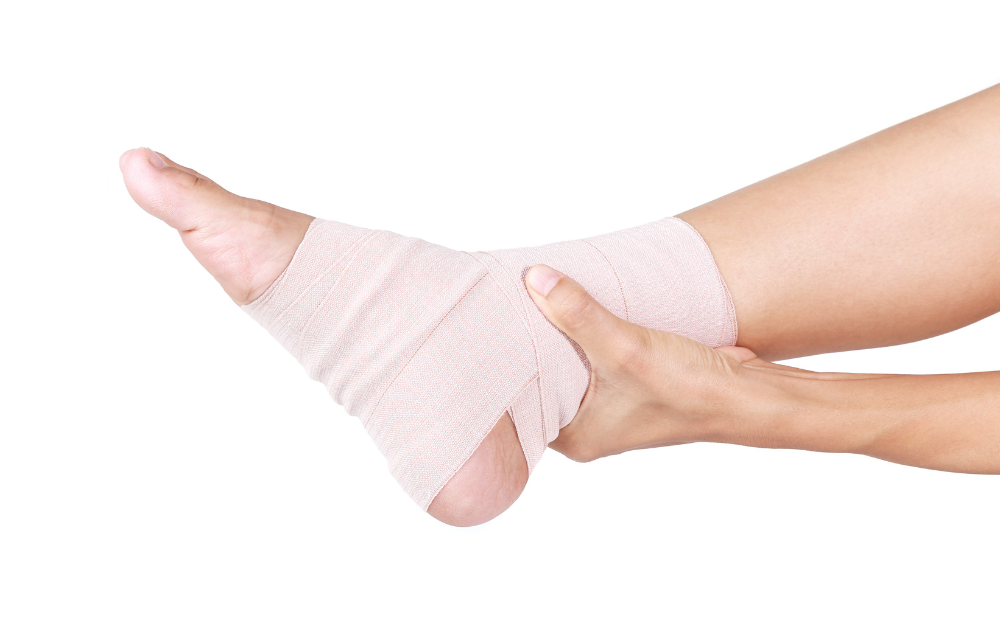Contents
Experiencing ankle pain after running can be concerning. For many people, running is a fantastic way to stay in shape and get into a good mood. The physical activity can release a lot of natural feel-good chemicals. When running causes pain instead, you might be frustrated. Ankle pain after running can be especially challenging to deal with when you do not know the underlying cause. By learning more about different causes for ankle pain, you may be able to better understand your own condition. Shedding light on the reason behind your discomfort can also reveal what you can do to find relief.
Common reasons for ankle pain after running
- Overuse — Have you been running farther or harder than usual? The source of your ankle pain after running could be overuse. Overuse injuries in the structures surrounding the ankle are a common cause of pain. Making sudden changes to the intensity of your exercise routine can put excess strain on your ankle. Over time, this stress can lead to persistent pain after activity. To address overuse, try to rest your ankle. You may want to consider lowering your daily or weekly running goals as well. By scaling up your exercise gradually, you can put less strain on your ankles while staying active.
- Poor footwear — Shoes that do not fit properly are a common cause of ankle pain after running. Many athletes wear shoes designed for running for this reason. If you are wearing poor footwear, your foot may not receive enough support. This can affect your posture and gait when running. Insufficient cushioning can also cause discomfort in other parts of your feet including the toes and arches. Addressing this issue is simple. You can upgrade to a pair of shoes that give your feet the support they need. This can help ensure that your body mechanics stay smooth.
- Sprained ankle — Ankle sprains are a common but painful injury. When you sprain your ankle, you may experience persistent pain and swelling for several days. In severe cases, recovering from an ankle sprain can take a few weeks. Sprains occur when a ligament is suddenly stretched or torn. The ankle ligaments function to support the ankle joint. These ligaments can be injured by running on uneven surfaces or experiencing a major fall. In addition to rest, physical therapy can help you manage your sprain. Hands-on therapy techniques can help you feel relief and speed up your recovery.
- Tendinitis — Tendons are strong bands of fibrous tissue that help keep your muscles and bones connected. Inflammation in these tendons can lead to a condition called tendinitis. Tendinitis can affect tendons throughout the body, including the ankle tendons. The Achilles tendon, which runs from calf to heel, can be especially vulnerable for runners. Inflammation of this tendon can lead to pain and swelling throughout the lower leg. These symptoms are typically made worse through strenuous activity. If you experience intense leg and ankle pain after running, tendinitis may be the cause. Targeted stretching and strengthening exercises can be crucial parts of the recovery process. Your physical therapist can help guide you through an effective exercise routine.
- Stress fractures — Repetitive impacts on your bones can take a toll. While running, your legs absorb the impact when your feet hit the ground. Resting your legs between exercise sessions can give your bones and muscles time to heal. Without sufficient rest, you may experience stress fractures. These are tiny cracks in the bone. To let stress fractures heal on their own, rest is essential. Your physical therapist can also help by addressing gait issues. Learning to distribute your weight more effectively can help prevent future stress fractures.
- Shin splints — Like stress fractures, shin splints are small injuries caused by excess stress. Overworking the muscles and tendons around your lower legs can lead to microtears in the tissue. These tears tend to cause localized pain around the shins, which is why they are called shin splints. Although this condition is primarily associated with shin pain, it can also cause discomfort in the knees and ankles. If you feel pain in your shins and ankles after running, the reason might be shin splints. Rest and stretching can be key to a successful recovery.
Lattimore Physical Therapy can help address your ankle pain after running
Want to find lasting relief or your ankle pain? Access professional guidance and treatment at Lattimore Physical Therapy. Our team brings specialty expertise and a positive attitude to each session. With a range of pain relief techniques available, we can help you feel comfortable while running again.
Contact our team today for more information or to schedule an initial appointment.



